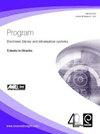基于协同过滤算法的学习对象推荐方法比较
Q Social Sciences
Program-Electronic Library and Information Systems
Pub Date : 2017-03-22
DOI:10.1108/PROG-05-2016-0044
引用次数: 2
摘要
目的本文的目的是比较三种不同的方法在存储库中推荐学习对象(LO)的结果。比较不仅关注预测误差,还关注每个测试配置的覆盖范围。设计/方法论/方法作者将使用纯协同过滤(CF)算法的离线评估与另外两种不同的预处理数据组合进行了比较。第一种预处理数据的方法是根据用户的学科相似性对其进行聚类,而第二种方法是根据他们在标题和描述方面的文本相似性对LO进行聚类。比较了三种方法的预测值和实际值之间的平均误差。此外,我们还评估了集群数量和邻域大小对用户覆盖率的影响。与纯CF方法相比,发现聚类LO改进了预测误差度量,用户覆盖率损失较小。另一方面,对用户进行聚类的方法在错误和用户空间覆盖方面都失败了。很明显,邻域大小是决定覆盖范围有多大的最相关参数。研究局限性本文提出的方法尚未在现实世界中进行评估,真实用户对建议及其各自的学习目标有意见。未来的工作仍然需要评估用户的意见。原创性/价值这项研究为针对LO存储库的新推荐方法提供了证据。本文章由计算机程序翻译,如有差异,请以英文原文为准。
A comparison among approaches for recommending learning objects through collaborative filtering algorithms
Purpose
The purpose of this paper is to present the results of a comparison among three different approaches for recommending learning objects (LO) inside a repository. The comparison focuses not only on prediction errors but also on the coverage of each tested configuration.
Design/methodology/approach
The authors compared the offline evaluation by using pure collaborative filtering (CF) algorithms with two other different combinations of pre-processed data. The first approach for pre-processing data consisted of clustering users according to their disciplines resemblance, while the second approach consisted of clustering LO according to their textual similarity regarding title and description. The three methods were compared with respect to the mean average error between predicted values and real values. Moreover, we evaluated the impact of the number of clusters and neighborhood size on the user-coverage.
Findings
Clustering LO has improved the prediction error measure with a small loss on user-coverage when compared to the pure CF approach. On the other hand, the approach of clustering users failed in both the error and in user-space coverage. It also became clear that the neighborhood size is the most relevant parameter to determine how large the coverage will be.
Research limitations
The methods proposed here were not yet evaluated in a real-world scenario, with real users opinions about the recommendations and their respective learning goals. Future work is still required to evaluate users opinions.
Originality/value
This research provides evidence toward new recommendation methods directed toward LO repositories.
求助全文
通过发布文献求助,成功后即可免费获取论文全文。
去求助
来源期刊

Program-Electronic Library and Information Systems
工程技术-计算机:信息系统
CiteScore
1.30
自引率
0.00%
发文量
0
审稿时长
>12 weeks
期刊介绍:
■Automation of library and information services ■Storage and retrieval of all forms of electronic information ■Delivery of information to end users ■Database design and management ■Techniques for storing and distributing information ■Networking and communications technology ■The Internet ■User interface design ■Procurement of systems ■User training and support ■System evaluation
 求助内容:
求助内容: 应助结果提醒方式:
应助结果提醒方式:


